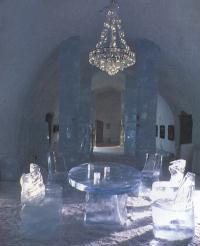Guggenheim Museum Bilbao, design example
2000/02/29 Roa Zubia, Guillermo - Elhuyar Zientzia
Why are buildings generally correct? Why do they have planes, parallel and perpendicular lines? One may think that in nature there are many other forms. Why are they not imitated more in architecture?
A few years ago the architects had the essential pencil for the design. And that's a solid reason to keep straight. The techniques they used to complete the first draft are based on triangles, right angles and euclidean geometry. In this way it was very difficult to design curved buildings. Now things are changing. The starting point, of course, is the computer. Curves can be designed much easier using computers and the limitation is imagination.
All easier so
However, gravity does not forgive. And that may be the reason for the right designs. The building must remain standing for a long time. Simple designs help a lot, as resistance and distribution of forces can be more easily calculated. When made by hand, this greatly conditioned the construction. As computers now do, simulation has expanded in this field.
On the other hand, the same brick houses are faster and cheaper. In addition, curved edges and flat stones accumulate very well on top of each other in a general scheme of the house. But that is also changing. Proof of this is the prestigious Guggenheim museum that the architect Frank Gehry made in Bilbao.
The building is designed with CAD/CAM technology. It has curved surfaces and non-applicable shapes. Asymmetric. The three-dimensional CAD model was a computer-oriented construction. The way of working is relatively new and it can be said that it is within the new outbreak that is being explained in modern architecture. Some architects like Gehry tend to work on appearances rather than blocks. For them the forms that appear in nature are unique inspirations. The Guggenheim Museum in New York, designed by Frank Floyd Wright, is an example of this. In his book Nature in Design, published by Alan Powers, he compares the building with the shell of a gastropod.
Other examples of this type of architecture can be found in the following books: Evolutionary Architecture by Eugene Tsui and Sci-Fi Architecture by Maggie Toy. Another interesting book referred to in the article is Wentworth Thompson's classic architecture literature On Growth and Form.

Gai honi buruzko eduki gehiago
Elhuyarrek garatutako teknologia






